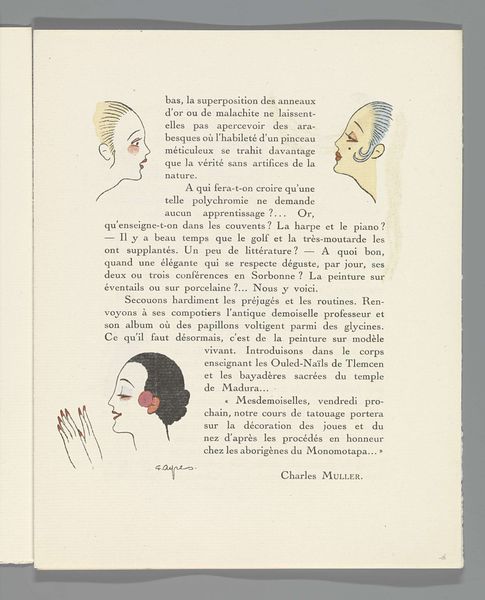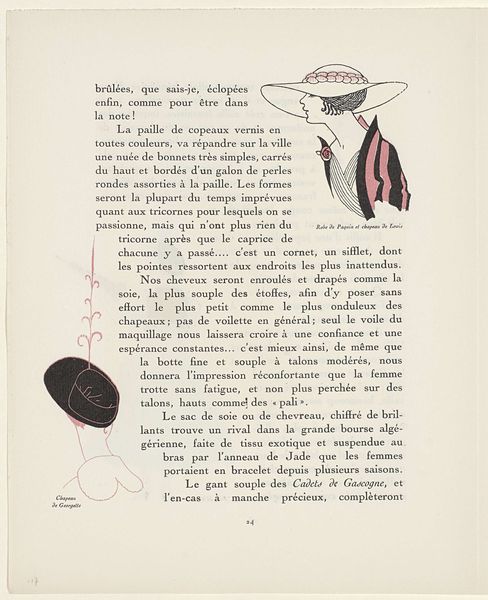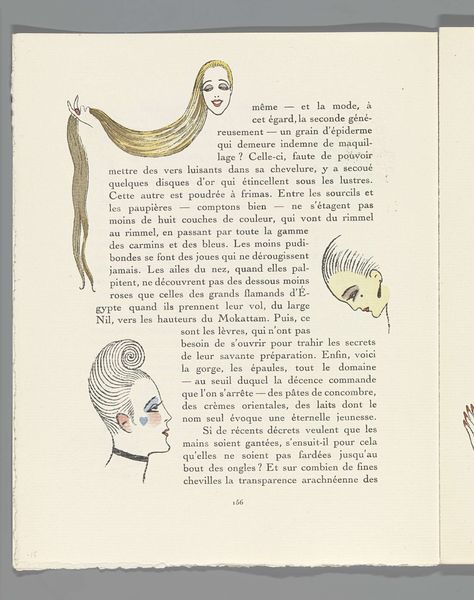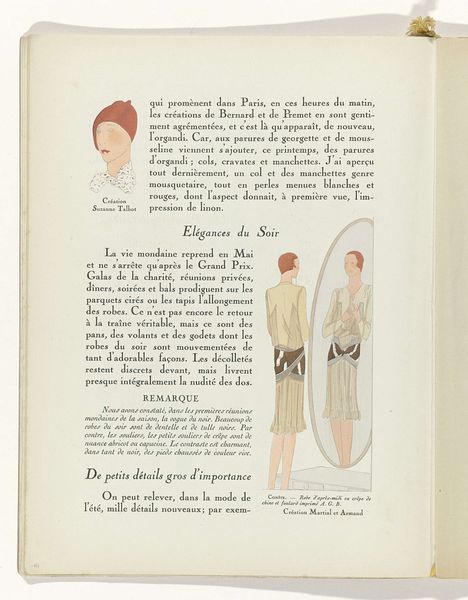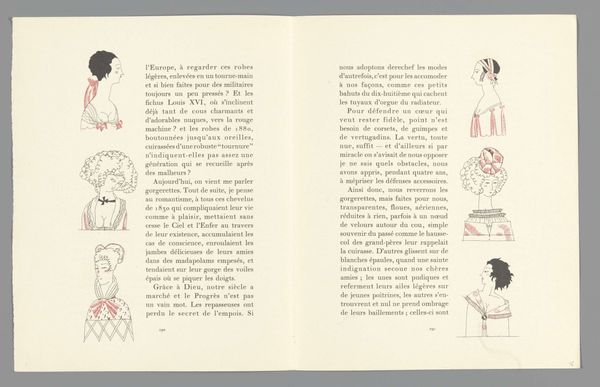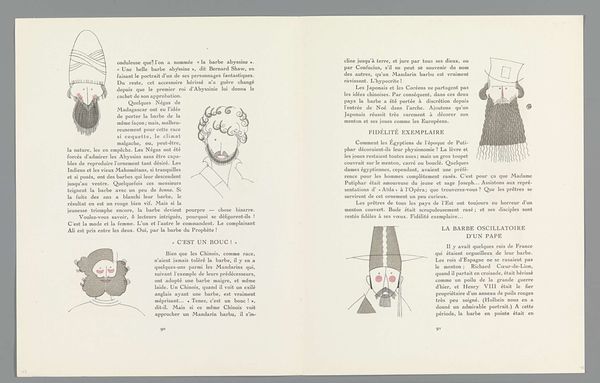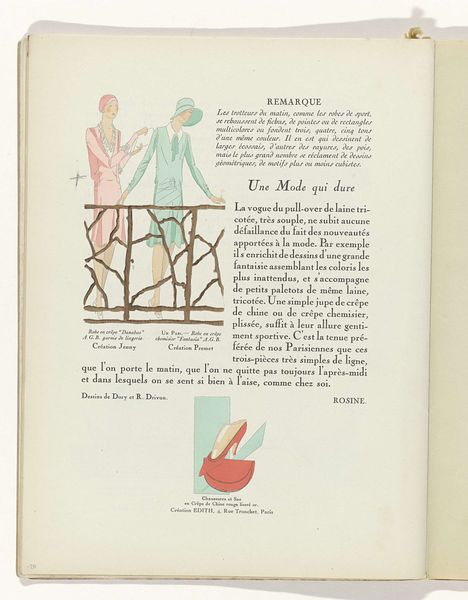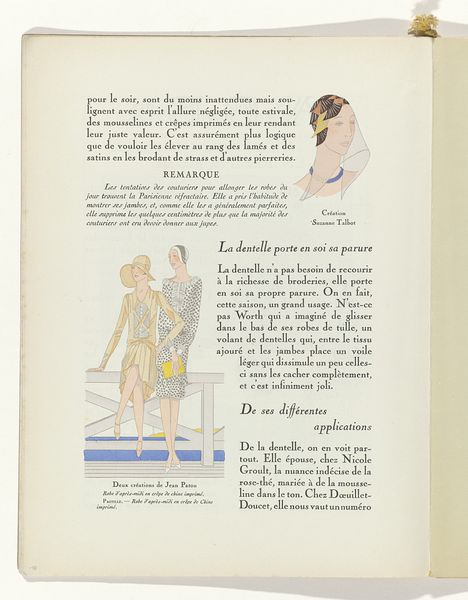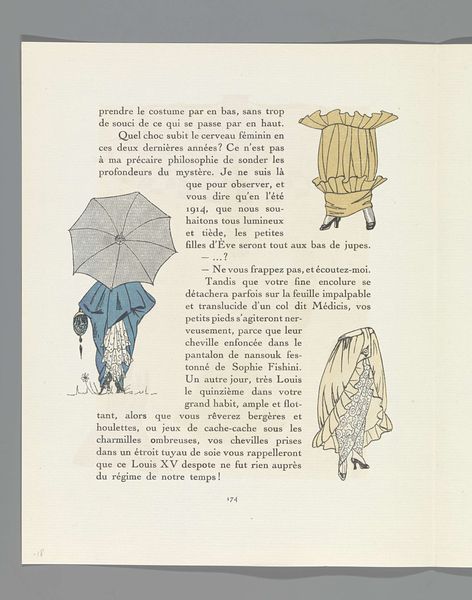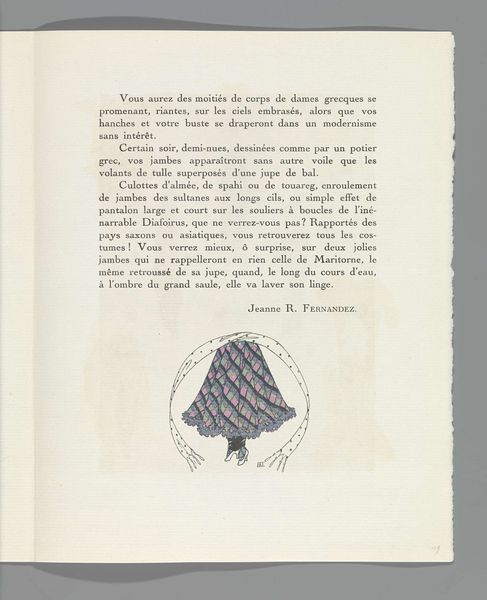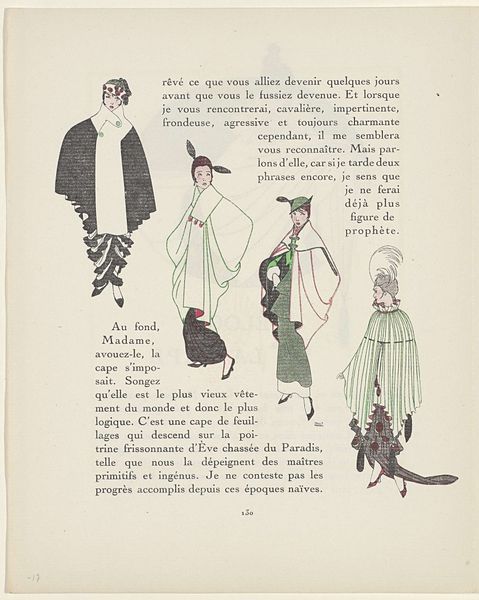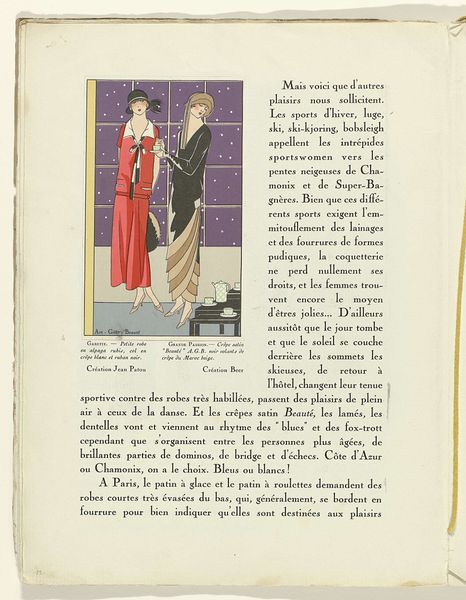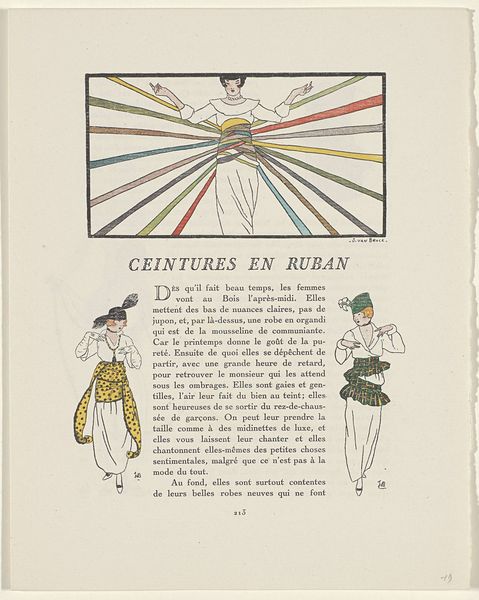
graphic-art, print
#
portrait
#
graphic-art
#
art-nouveau
# print
Dimensions: height 246 mm, width 192 mm
Copyright: Rijks Museum: Open Domain
Editor: This print from the Gazette du Bon Ton, dated 1914 and attributed to E. Ayres, strikes me as peculiar. The disembodied lips and the ghostly portrait are unsettling, almost surreal, despite the Art Nouveau style. How do you interpret this work? Curator: This piece vibrates with a sense of performance and societal artifice. Consider the disembodied lips – exaggerated, almost theatrical. Lips are a primal form of communication, symbols of both sensuality and speech. Here, detached from faces, they feel like masks, perhaps hinting at a disconnect between outward appearance and true emotion prevalent in fashionable society at the time. What about that flower? What is its symbolic weight? Editor: Well, the tulip has diverse symbolism, love and passion in some places, while arrogance and oblivion in others. Curator: Precisely. Notice how it's offered by a hand detached from a body. This speaks to the giving and receiving of these complex and sometimes contradictory messages, doesn’t it? And the figure on the right, adorned with a star; this points to a constructed persona, deliberately 'put on', in this specific social context of high fashion. This image feels like a commentary on identity carefully crafted and presented to the world. Editor: I see what you mean. The star seems to highlight the artificiality of beauty and fame, particularly the performance of femininity. I never thought of the lips as masks, but that adds another layer of meaning. Curator: It encourages us to consider what is hidden behind these carefully constructed images, which persist across a century of fashion illustrations! Do you find it's making you rethink that opening mood that you had? Editor: Definitely. I was fixated on the strangeness, but now I recognize its social commentary, like a symbolic stage play with masks!
Comments
No comments
Be the first to comment and join the conversation on the ultimate creative platform.
